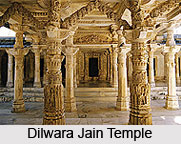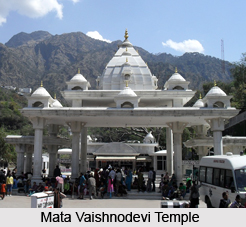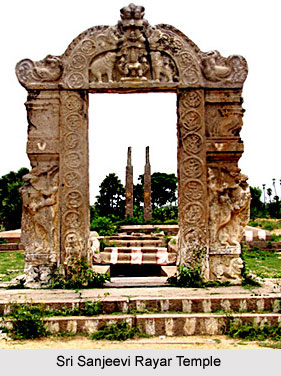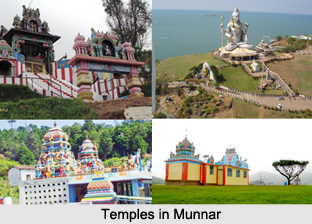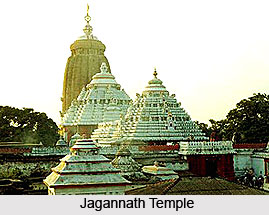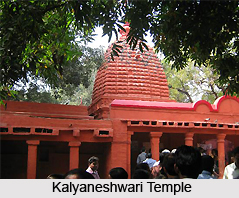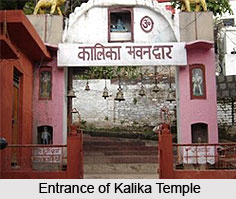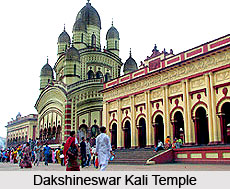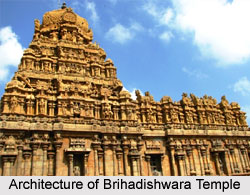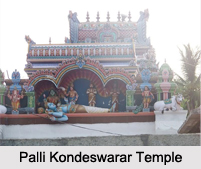 Palli Kondeswarar Temple is located in the Indian state of Andhra Pradesh. More specifically, this temple is situated in the district of Chittoor in a village called Surutapalli. Globally, this temple can be pinpointed at coordinates 13 degrees and 9 minutes north and 80 degrees and 18 minutes east. This is a Hindu temple dedicated to Lord Shiva, also known as Bhoga Sayana Siva or Palli Kondeswarar. Palli Kondeswarar translates into reclining deity in English.
Palli Kondeswarar Temple is located in the Indian state of Andhra Pradesh. More specifically, this temple is situated in the district of Chittoor in a village called Surutapalli. Globally, this temple can be pinpointed at coordinates 13 degrees and 9 minutes north and 80 degrees and 18 minutes east. This is a Hindu temple dedicated to Lord Shiva, also known as Bhoga Sayana Siva or Palli Kondeswarar. Palli Kondeswarar translates into reclining deity in English.
History of Palli Kondeswarar Temple
According to mythology, the samudra manthan (churning of the ocean of milk) by the gods and demons resulted in the surfacing of many treasures along with the Amrita (elixir of the gods) and the poison, Halahala from the ocean. Shiva consumed the poison to save the corporeal beings. But Shiva"s consort, Parvati came to his rescue. She tightly held His throat in order to prevent the poison from going down the throat of Shiva. Shiva`s neck thus became blue. After the incident, Shiva and his consort Parvati proceeded to his abode, Kailash. When He reached a place in the bounds of Andhra, He felt fatigued and slightly uncomfortable, after consuming the poison. In this very place, He lied down to relax, keeping His head in the lap of Parvati. Many gods concerned about Shiva"s well-being also came to this place. They assembled near Shiva waiting for the lord to open his eyes. This particular place came to be known as Surutupalli (The word `Surutu` meaning a little dizzy and `Palli` meaning resting), based on the incident described above.
Architectural Design of Palli Kondeswarar Temple
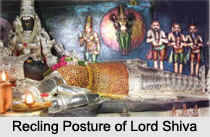 Palli Kondeswarar Temple is a representation of the Dravidian style of architecture. It was built during the Vijayanagara period. Usually Shiva temples have Lord Shiva in the form of a lingam, which is considered to be the iconic symbol of lord Shiva. This lingam is generally the central icon of the temple. As an exception, Lord Shiva will be evident to the devotees in a reclining posture, lying in the lap of his consort, Parvati as Sarva Mangalambika, which is typical of Ranganatha form of the Lord Vishnu. This posture is considered to be a rare and unique pose of Lord Shiva. Lord Shiva is surrounded by various other gods, sages, another form of Shiva, Navagraha deities in a shrine and Sanganidhi and Padumanidhi with their consorts, Vasundara and Vasumadhi. More specifically, some of the gods around Lord Shiva are Ganesha, Kartikeya, Surya, Chandra and Indra. Bhrigu, Markandeya, Narada, Agastya, Pulastya and Gautama are some of the sages in the temple. Adhishankara, is the other form of Shiva located in a separate niche of the temple.
Palli Kondeswarar Temple is a representation of the Dravidian style of architecture. It was built during the Vijayanagara period. Usually Shiva temples have Lord Shiva in the form of a lingam, which is considered to be the iconic symbol of lord Shiva. This lingam is generally the central icon of the temple. As an exception, Lord Shiva will be evident to the devotees in a reclining posture, lying in the lap of his consort, Parvati as Sarva Mangalambika, which is typical of Ranganatha form of the Lord Vishnu. This posture is considered to be a rare and unique pose of Lord Shiva. Lord Shiva is surrounded by various other gods, sages, another form of Shiva, Navagraha deities in a shrine and Sanganidhi and Padumanidhi with their consorts, Vasundara and Vasumadhi. More specifically, some of the gods around Lord Shiva are Ganesha, Kartikeya, Surya, Chandra and Indra. Bhrigu, Markandeya, Narada, Agastya, Pulastya and Gautama are some of the sages in the temple. Adhishankara, is the other form of Shiva located in a separate niche of the temple.
Festivals of Palli Kondeswarar Temple
Pradosha, also known as Pradosham is the festival celebrated in Palli Kondeswarar Temple. More specifically, this festival is a bimonthly occasion, celebrated on the thirteenth day of every fortnight in Hindu calendar. This festival involves the worship of Lord Shiva. One of the optimum time for the said purpose is the auspicious 3 hour period, which is 1.5 hours before and after the sunset. Another festival known to be celebrated in Palli Kondeswarar is Sivarathri. As per estimations, this temple has witnessed a record attendance of about 15,000 visitors during pradosham and around 30,000 during the Sivarathri festival.
Visiting Information
Palli Kondeswarar Temple is accessible by bus from Nagalapuram in Andhra Pradesh or Uthukottai in Tamil Nadu on the main road to Chennai from Puttur (Andhra Pradesh). From Uthukottai, the temple is just 2 kms away and is on the main road itself. Practically, it is at the end of the Uthukottai town which is the border between Tamil Nadu and Andhra Pradesh.
Related Articles:
Indian Regional Temples
South Indian Temples
North Indian Temples
West India Temples
East India Temples
Indian Temples












